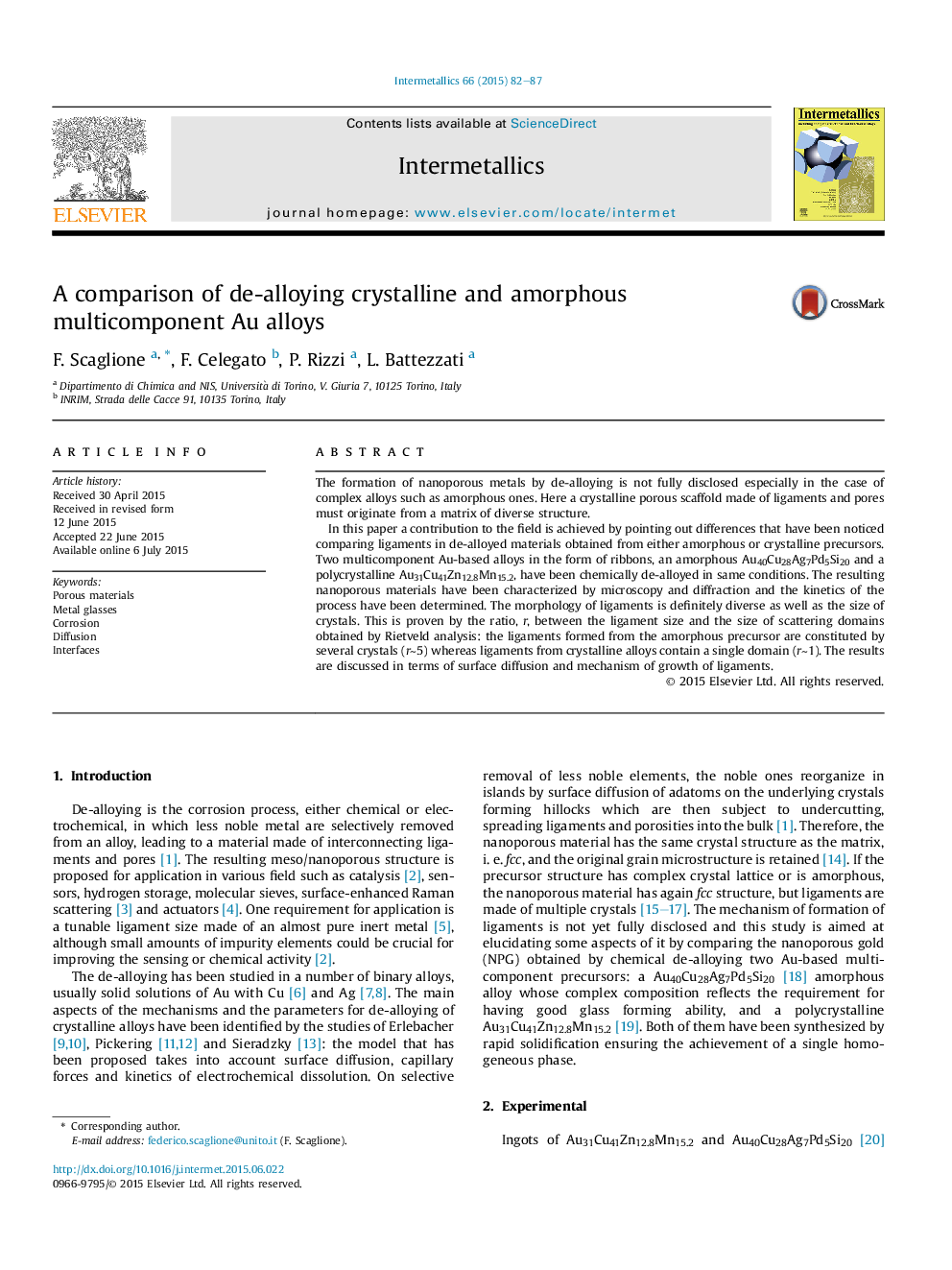| Article ID | Journal | Published Year | Pages | File Type |
|---|---|---|---|---|
| 1599775 | Intermetallics | 2015 | 6 Pages |
•NPG made by free corrosion of a crystalline and an amorphous Au-based alloys.•Coarsening of ligaments as a function of temperature and electrolyte concentration.•Difference in de-alloying mechanism in crystalline or amorphous precursor outlined.•Ligaments morphology changes with the matrix from which they derive.•Kinetics of de-alloying determined.
The formation of nanoporous metals by de-alloying is not fully disclosed especially in the case of complex alloys such as amorphous ones. Here a crystalline porous scaffold made of ligaments and pores must originate from a matrix of diverse structure.In this paper a contribution to the field is achieved by pointing out differences that have been noticed comparing ligaments in de-alloyed materials obtained from either amorphous or crystalline precursors. Two multicomponent Au-based alloys in the form of ribbons, an amorphous Au40Cu28Ag7Pd5Si20 and a polycrystalline Au31Cu41Zn12.8Mn15.2, have been chemically de-alloyed in same conditions. The resulting nanoporous materials have been characterized by microscopy and diffraction and the kinetics of the process have been determined. The morphology of ligaments is definitely diverse as well as the size of crystals. This is proven by the ratio, r, between the ligament size and the size of scattering domains obtained by Rietveld analysis: the ligaments formed from the amorphous precursor are constituted by several crystals (r∼5) whereas ligaments from crystalline alloys contain a single domain (r∼1). The results are discussed in terms of surface diffusion and mechanism of growth of ligaments.
